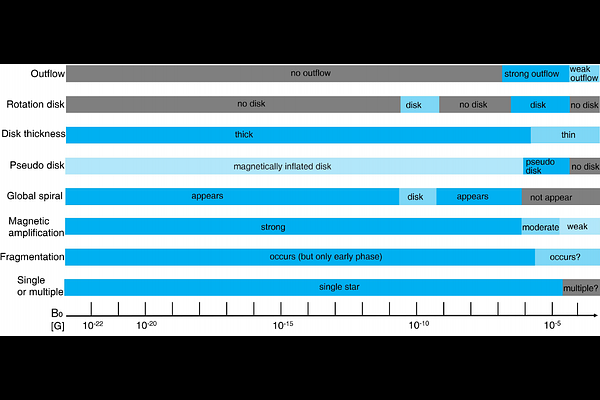Effect of Magnetic Field on the Accretion Phase of Population III Star Formation

Effect of Magnetic Field on the Accretion Phase of Population III Star Formation
Masahiro N. Machida, Shingo Hirano, Shantanu Basu
AbstractWe examine the impact of the magnetic field on Population III star formation by varying the magnetic field strength. We perform simulations with magnetic field strengths ranging from $10^{-20}$ G to $10^{-4}$ G, in addition to a model without a magnetic field. The simulations are run for $>1000-1400$ yr after the first protostar forms. In weak-field models, the surrounding disk fragments, forming multiple protostars, and the magnetic field is amplified by the orbital motion and rotation of these protostars. In the model without a magnetic field, frequent fragmentation occurs, and the most massive protostar reaches $\sim200 M_\odot$. However, in models with a magnetic field, once the magnetic field is amplified, the protostars merge to form a single massive protostar, and no further fragmentation occurs except in the model with the strongest magnetic field. Even after the formation of the single protostar, the magnetic field continues to amplify, leading to the formation of a thick disk supported by magnetic pressure and a global spiral pattern. In models with moderate or strong magnetic fields, a rotating disk can form, but fragmentation does not occur, and a strong magnetic field drives an outflow. However, the range of parameters for both disk formation and outflow driving is very narrow, making their appearance under realistic conditions unlikely. Given the weak magnetic field in the early universe, Population III stars are expected to form as single stars, surrounded by a thick disk with a spiral pattern. Thus, the magnetic field, regardless of its strength, plays a crucial role in Population III star formation.